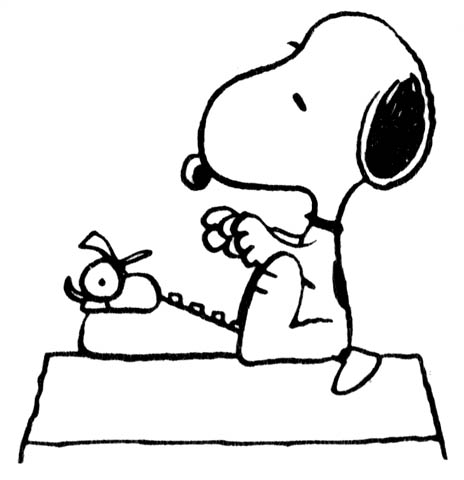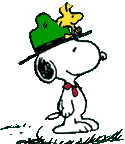WORDS OF THE WEEK
- INTEGRITY: Being Honest and Fair. The classroom and hallway monitors must have integrity. They must be honest and fair.
- BRAINSTORM: This is a compound word made up of Brain and Storm. A storm is when there is a lot of activity in the weather. The wind is whipping around and going fast. When we BRAINSTORM, we let our brain blow from one thought to another. We think of as many things as we can, and we jot them all down.
|
BRAINSTORMING ADJECTIVES
Adjectives are DESCRIBING WORDS. They provide a DESCRIPTION of something. They help us make our writing more interesting!
We brainstormed as many adjectives as could think of, and we put them into different categories. We worked on our list during Writing Workshop, and during our Morning Meeting. Here are just a few of the words we came up with to describe…
GOOD FEELINGS (thumbs up): Excited, Wise, Helpful, Courageous, Super, Easy, Generous, Respectful, Kind, Happy, Funny, Awesome, Brave
NOT-SO-GOOD FEELINGS (thumbs down): Tired, Contagious, Bored, Confused, Cruel, Nauseous, Disappointed, Frustrated, Nervous, Horrible, Exhausted, Sad, Gross
"it depends" FEELINGS (thumbs to either side): Scary, Crazy, Tricky, Shy, Average
LOOKS: Tall, Short, Green, Pale, Fast, Hairy, Skinny, Beautiful, Handsome, Cross-eyed, Orange, Spotted
SMELLS: Fishy, Skunkish, Stinky, Sweet, Smelly
TASTES: Bitter, Salty, Sour, Spicy, Yucky, Sweet, Cold, Hot, Delicious, Yummy, Scrumptious
TOUCHES: Soft, Hard, Bumpy, Furry, Sticky, Rough, Hot, Cold, Gooey, Wet, Dry, Frozen, Slimy, Smooth
SOUNDS: Noisy, Loud, Quiet

|
|
Orcas Around Me: My Alaskan Summer
During our Morning Meeting, we have been reading a very exciting picture book called Orcas Around Me: My Alaskan Summer (written by Deborah Page). This is a true story told from the point of view of Taiga Page (the son of the author). Taiga's mom and dad are commercial fishermen in Alaska. Taiga and his younger brother spend their summers helping their parents on the boats. Not only does Taiga help with catching and cleaning the salmon, but he also meets sea lions, porpoises, otters, and orcas. Each day, Taiga's adventures lead to one of our own interesting conversations.
- On Tuesday, we looked at Alaska and New York on the globe, and we talked about the difference between continents, countries, and cities, as well as how our country is divided into states.
- On Wednesday, when Taiga's dog spoke to and calmed the dall porpoise that Taiga's dad had accidentally caught, we talked about alternate forms of communication.
- On Thursday, when the Orcas were trying to eat the sea lions, we talked about how harbor seals hide from orcas. We learned about glaciers, fjords, ice bergs, and echolocation.
|
IS IT A CONTINENT, COUNTRY, STATE, OR CITY?
- The planet Earth has seven big chunks of land. They are called CONTINENTS. Their names are North America, South America, Europe, Asia, Africa, Australia, and Antarctica.
- A continent may be divided into COUNTRIES. Each country has its own government. That means that one country may have different rules from another country. Usually, most of the people who live in the same country speak the same language. Examples of countries are: The USA, Canada, Mexico, England, France, Italy, China, Japan, Russia, and Brazil. Each country has many cities and towns in it.
- Our country, the United States of America, is divided into STATES. Examples of states are: New York, Alaska, Florida, Pennsylvania, Hawaii, California, and Texas. Each state has lots of cities and towns in it.
- A CITY or TOWN is the specific place in the state (or in the country) where we live. Examples of cities and towns are: Endicott, Vestal, Binghamton, Boston, NewYork City, London, Paris, and Washington, D.C.
|
ALTERNATE FORMS OF COMMUNICATION
How else can we send a message besides using words? Taiga's dog communicated a message to the dall porpoise that calmed it. How did he do that? Here are some of the ways we came up with to send a message (besides talking or writing words):
- Sign Language (hands)
- Morse Code (sounds)
- Musical notes (the recorder)
- Hand signals from the catcher to the pitcher in baseball (hands)
- Hieroglyphics in Egypt a long time ago (pictures & symbols)
- Cave Paintings (pictures)
- Secret Codes
- Making faces and pantomime (body language)
- Drums (sounds)
- Braille (touch)
- Numbers (math or computer language)

|
|
GLACIERS, FJORDS, ICE BERGS, HARBOR SEALS, ORCAS, and ECHOLOCATION
- What is a GLACIER and how is it made?
- There are some places in the world, like parts of Alaska, where it snows many feet a day, every day of the year. That means new snow keeps piling on top of old snow. Eventually, the old snow on the bottom of the pile has so much weight on top of it, with all the new snow that keeps falling on it, that the old snow on the bottom gets pressed into ICE.

- Meanwhile, it continues to keep snowing. The weight of the new snow continues to press down on the layers of snow and ice underneath, and it pushes the ice molecules even tighter together. The scientific word is to say the ice gets more DENSE. It is becoming GLACIAL ICE, and sometimes it looks blue.
- As more and more snow continues to fall, the weight of it causes the glacial ice to actually move aside. When you push down hard enough on something, and it can't get any more dense than it is, then it starts to spread out. For the glacial ice to spread out, it actually has to move through rock. It has to carve out a path in the rock of the mountain.
- Think about this: What happens when it rains so much that a lake overflows? The water overflows into little rivers and streams that spread out from the lake. Glaciers are like rivers of ice that spread out from an ice field. Look at your hand. The palm is like the ice field where it is snowing every day of the year, and your fingers are like the glaciers that are moving through rock as they get pushed out by the force of the snow's weight.
- The more it snows, the more the glacier moves forward. The less it snows, and the warmer the air, the more the glacier will "CALVE" and move back. Calving is when parts of the glacier break off and fall into the water with the sound of an explosion. The part that breaks off becomes an ice berg. Having lost some of itself, the glacier looks like it has moved backward. Usually, glaciers move a little bit in both directions each day. They'll move forward some, and they'll calve and move back some.
 
- When a glacier moves forward more than it moves back, we say it is "advancing."
- When it moves back more than it moves forward, we say it is "retreating."
- What is a FJORD? When a glacier retreats for many years, it leaves a path of where it had been. That path is a big U-shaped valley of rock that had been carved by the ice moving through it. The valley fills up with saltwater from the ocean, and it is called a fjord. On Earth, there are fjords in Alaska and in Norway.
- HARBOR SEALS love to hang out at very end of a fjord near where the glacier is calving. The reason they like to be there, especially to have their babies, is because the ORCAS (killer whales) won't go there. Orcas are their number one predator. In other words, orcas love to eat harbor seals. The harbor seals want to be safe from the orcas.
- The reason that Orcas don't like to go very far into a fjord is because they travel by ECHOLOCATION. That means they listen to the sounds they make bounce off things (the echoes) underwater. When there are a lot of ice bergs in the water, there are too many things for the sounds to bounce off of, and so there are too many echoes. It is confusing for the orcas. So they wait at the entrance of the fjord. They know the harbor seals will come out sooner or later, and they want to be ready!
|




 Click on Snoopy Typing to go back to the Directory of Campfire Chronicles!
Click on Snoopy Typing to go back to the Directory of Campfire Chronicles!
 Click on the Beagle Scout to go back to Camp Linus!
Click on the Beagle Scout to go back to Camp Linus!